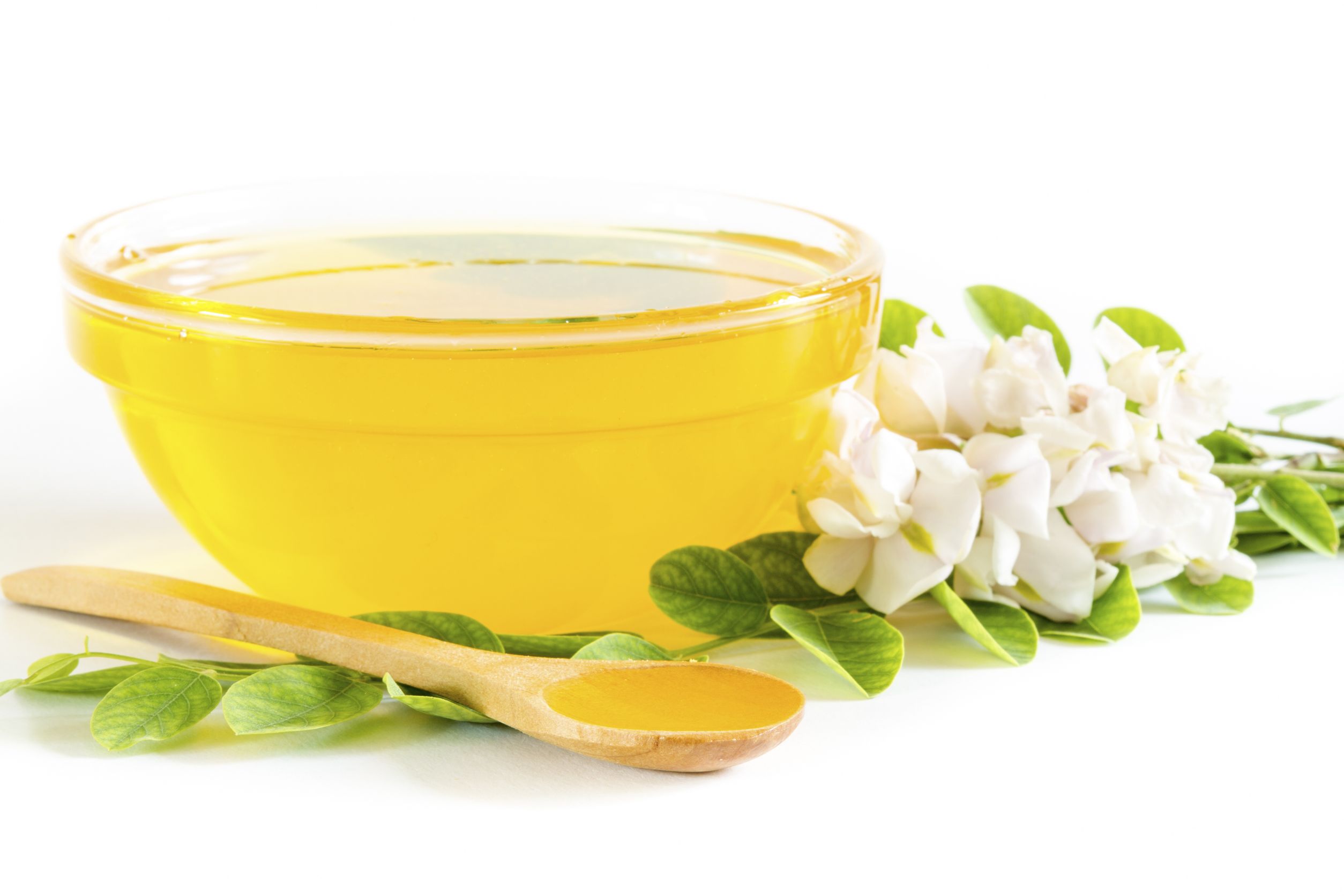
Acacia was brought and spread in Hungary by Sámuel Tessedik in order to stabilize the sandy soil. In some parts of the country it has found its second home. This is proven by its well-marked vitality and the number of varieties it has produced in a relatively short time. Among the different types of honey produced in Hungary, acacia honey is the best known, the most popular all over the world. Hungarian acacia honey has reached this reputation because acacia woods are most wide-spread in Hungary within Europe. While in Northern America – its original home – it grows in sparse groves, in our country it creates coherent woods. At the time of acacia blossoming there are relatively few blossoming plants that could „spoil” the characteristic light green colour of acacia honey. Due to this, and thanks to the coherent woods, Hungarian acacia honey has the best quality. The largest acacia forests can be found is Nyírség, Bakony and Mezőföld.
The characteristics of acacia honey
Acacia honey is crystal clear with a slightly greenish-yellow colour, with a greenish shade in certain vintages. Its scent is reminiscent of the acacia blossom itself. Its smackless character makes it unique with a taste sweeter that most types of honey. Its acid content is lower that in most types of honey. It is rich in fructose, therefore it becomes gritty very slowly, preserving its consistence for one or two years. One of the three least crystallizing honey types in the world is acacia honey. Besides its excellent sweetening quality, this is the other reason why it so widely sold all over the global market.
The effects of acacia honey
Acacia honey contains robonine and acacine, therefore it disinfects, detoxifies and eases coughs. It is also effective in curing the over-acidity of the stomach. Acacia honey fructose helps the liver regenerate. It is also an effective muscle relaxant for athletes. Its mild taste makes it a smooth sweetener in cookies. It can be eaten raw as a delicacy, or as the basis of honey schnapps, honey wine and metheglin.
